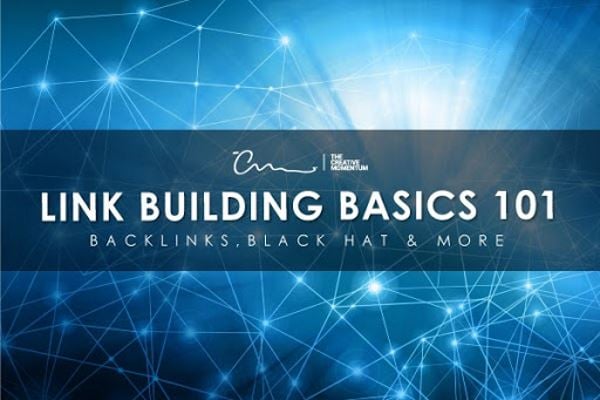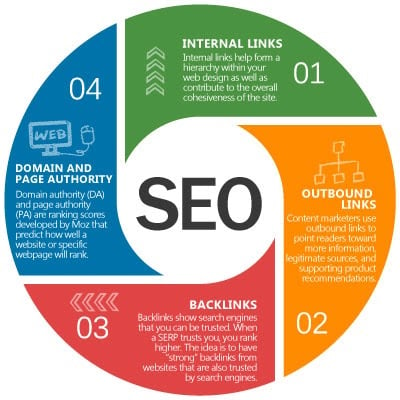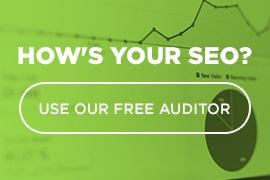 Search engine optimization (SEO) is an intricate, interconnected content marketing puzzle, and link building has always been a significant piece of that puzzle. Popular SEO gurus like Moz refine their link building 101 guidelines every few years, but the consensus remains the same: links are important.
Search engine optimization (SEO) is an intricate, interconnected content marketing puzzle, and link building has always been a significant piece of that puzzle. Popular SEO gurus like Moz refine their link building 101 guidelines every few years, but the consensus remains the same: links are important.
Link building is the SEO practice of building a web of inbound, outbound, and internal links to and from your website. And while link building isn’t the end-all when it comes to search engine optimization in 2020, it’s important to have a solid link building foundation in your SEO toolbox. Here’s what you need to know.
Link Building Explained
Simply put, link building is getting other sites to link to your content and vice versa. You’re link building when you choose anchor text or images and add a hyperlink that points somewhere else. You’re also link building when you can get another website to anchor its text or images to content on your website. These are known as inbound links, or “backlinks.”
The days of lawless link building are dead. You’re bound to get penalized more for dirty link building tactics these days than you are to benefit from them.
Today, link building is still one of Google’s top three search engine ranking factors, which makes it just as important to your SEO strategy as ever.
Link Building Basics and SEO Impact
The general goal of link building is to rank higher in search engine results pages (SERPs). Internal links, backlinks, and outbound links all play a part in search engine rankings and navigating your website.
Internal Links
Internal links are links that point back to your own website. Internal links are great for directing traffic to more informative articles on your blog, to product pages, or to content like tutorials and how-to videos located somewhere else on your website.
Internal links help form a hierarchy within your web design as well as contribute to the overall cohesiveness of the site.
Outbound links
Outbound links are links that point from your website to another website. Smart search engine optimizers use strong anchor text keywords and phrases for better SERPs rankings. The more relevant your keywords and surrounding content, the higher you’ll rank in SERPs.
Content marketers use outbound links to point readers toward more information, legitimate sources, and supporting product recommendations.
Backlinks/Inbound Links
Backlinks (AKA inbound links) are links that point from another website back to your own. Backlinks used to be the links—the ones that mattered most—and they’re essentially a stamp of approval from another brand, business, or blogger.
Backlinks show search engines that you can be trusted. When a SERP trusts you, you rank higher. The idea is to have “strong” backlinks from websites that are also trusted by search engines.
The link building infrastructure of top brands likely looks like intricate spider webs with countless outbound, inbound, and internal links that connect to hundreds of URLs all over the internet.
BONUS: Domain and Page Authority
Domain authority (DA) and page authority (PA) are ranking scores developed by Moz that predict how well a website or specific webpage will rank. Neither one is directly affiliated with search engines like Google or Bing, but companies often use domain and page authority scores as comparative metrics to help gauge SEO performance.
Moz admits that DA and PA scores have a lot to do with the number of “high-quality external links” a website has pointing back to it.
White Hat vs. Black Hat Link Building
White hat and black hat links are the good guys and bad guys of the link building world. Moz has a great article explaining the good, the bad, and the ugly of link building. Here’s a brief rundown of what you need to know:
White hat links are good.
White hat link building is relatively low risk in the sense that you’re not breaking any search engine rules to acquire your links.
White hat links are organic and often come as a result of strong, authoritative, original content and authentic interaction with your audience.
The downside of white hat link building is that it takes time. Worthwhile white hat links are usually a reward for a long-term content strategy.
Black hat links are bad.
Black hat link building directly violates search engine rules, and the consequence for getting caught using black hat tactics is penalization and even delisting from SERPs. That’s bad.
Examples of black hat link building are buying links to your site, cloaking (showing different content to users and search engines) or hiding links behind design elements or in colors that users can’t see.
The simple truth is that white hat link building is more sustainable and less risky. You might see some temporary boosts from black hat tactics, but when the Google hammer drops, it drops hard.
Link Building Tips for 2020
Remember, link-building isn’t a quick-win kind of strategy, and smart optimizers have more than link building in their toolbox. But it’s still important to know which link juice is worth the squeeze in 2020.
- Give each section a link. Blog articles and page content often get sectioned into digestible pieces through headings and subheadings. If you have five sections in your article, make sure you have (at least) five links as well. You can have more, but a general rule of thumb is one link per section.
- Vary your links. Use a combination of inbound, outbound, and internal links.
- Be an authority in your field. The best strategy for earning backlinks is to be an authority in your field. The more quality content you create, the more backlinks you’ll generate from other websites that share and reference that content.
- Be familiar with the “nofollow” attribute. “Nofollow” is an attribute you can use to tell search engines to not consider certain links. But why wouldn’t you want search engines to index certain links? You can use “nofollow” when links (like those in user blog comments) would do nothing to help your ranking.
- Guest blog and accept contributing writers. Guest blogging is a reliable way to spread your content to other websites while also featuring reputable contributing writers. Share links to guest blog articles, link back to pages on your website, and ask that your contributing writers do the same.
- Control your anchor text. Use relevant, unique keywords and phrases as anchor text for your links to help search engines understand what your content is about. The better search engines understand your content, the higher you’ll rank for those search terms on results pages.
Quality is Better than Quantity for Link Building
General consensus in the SEO world is that quality links are better than a large quantity of poor links. That means you’re better off investing in a solid content marketing team with a long-term strategy than you are dropping $500 on black hat links that might get you penalized.
The bottom line is that link building helps search engines validate websites as authorities on topics of interest, separates legitimate products and brands from imposters, and generally makes search engine results pages more accurate.



